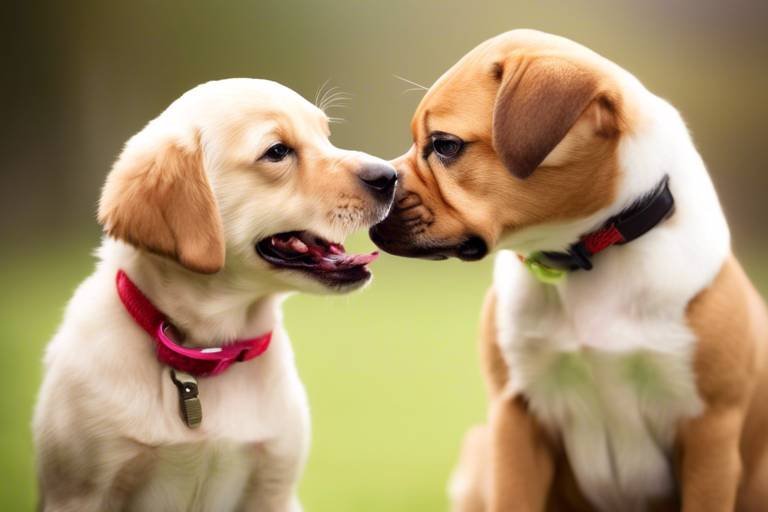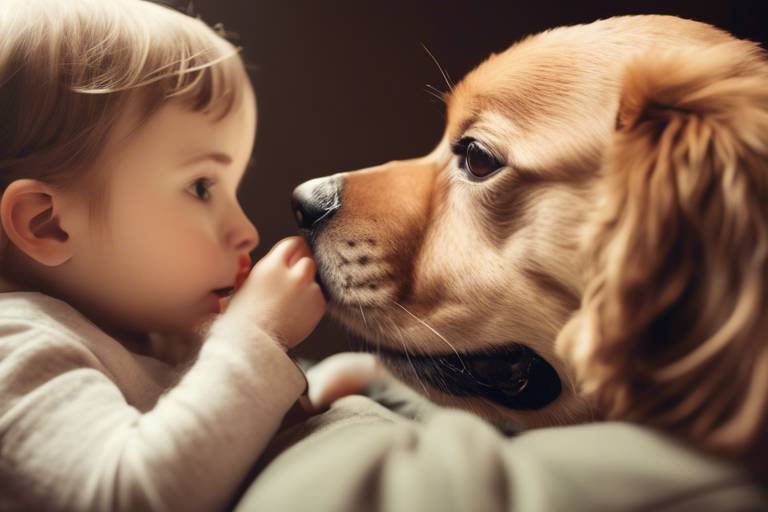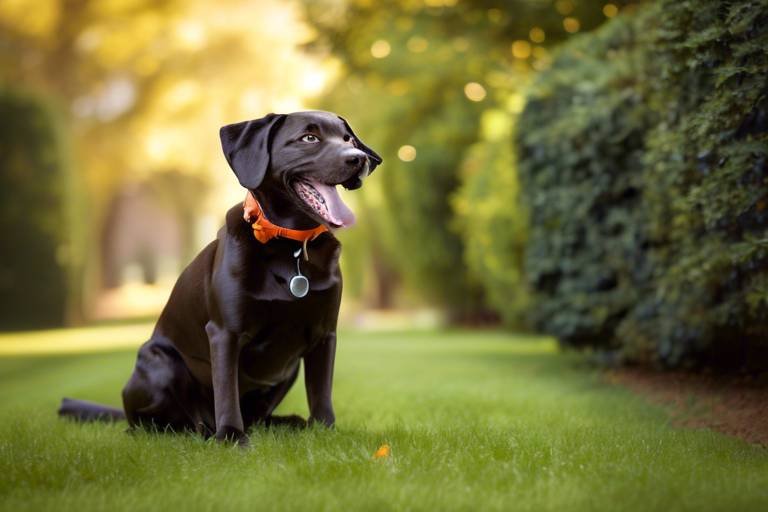The Basics of Positive Reinforcement in Dog Training
When it comes to training our furry friends, positive reinforcement stands out as one of the most effective and humane methods available. At its core, positive reinforcement is all about rewarding your dog for good behavior, encouraging them to repeat those actions in the future. Imagine teaching your dog to sit: instead of scolding them for not sitting, you offer them a tasty treat or a hearty pat on the back when they do. This creates a positive association with the behavior, making it more likely that they will sit on command in the future. It’s like giving your dog a high-five for being awesome!
So why is this method so effective? The psychology behind positive reinforcement is rooted in the principles of behavioral science. When a behavior is followed by a rewarding stimulus, the likelihood of that behavior being repeated increases. This is a fundamental concept known as operant conditioning. Unlike traditional training methods that often rely on punishment or negative reinforcement, positive reinforcement builds a foundation of trust and understanding between you and your dog. It’s a partnership where both parties feel good about the experience.
In this article, we will explore the fundamental principles of positive reinforcement, its benefits, and the techniques you can use to implement this method effectively. Whether you’re a seasoned dog owner or a first-time puppy parent, understanding these concepts can transform your training sessions into enjoyable and productive experiences. Are you ready to dive into the world of positive reinforcement? Let’s go!
Positive reinforcement involves rewarding desired behaviors to encourage their repetition. This section delves into the psychological principles that make this method effective and how it contrasts with traditional training methods. By focusing on what your dog does right, rather than punishing them for mistakes, you create a more positive learning environment. This approach not only enhances your dog's willingness to learn but also strengthens the bond you share.
Utilizing positive reinforcement can lead to a stronger bond between dogs and their owners. The benefits of this method are numerous and can positively impact both your dog’s behavior and your training experience. Here are a few key advantages:
- Improved Behavior: Dogs trained with positive reinforcement are often more well-behaved and responsive.
- Increased Motivation: Rewarding your dog motivates them to engage and participate actively in training.
- Enjoyable Experience: Training becomes a fun and rewarding process for both you and your dog.
Positive reinforcement fosters trust and confidence in dogs. When you consistently reward good behavior, your dog learns to associate training with positive experiences. This creates a safe learning environment, encouraging them to explore and engage without fear of punishment. Just like a child who feels safe in a supportive classroom, dogs thrive when they know they won’t be scolded for making mistakes. They become more curious and willing to try new things, which enhances their learning process.
Using positive reinforcement can significantly reduce anxiety in dogs during training sessions. Dogs that are subjected to harsh training methods often become fearful and anxious, which can hinder their ability to learn. In contrast, a reward-based approach alleviates stress and promotes a more relaxed atmosphere for learning. Think of it as a cozy coffee shop where you feel comfortable to chat and learn, rather than a strict classroom where you fear making mistakes.
Studies have shown that dogs trained with positive reinforcement tend to retain learned behaviors longer. This is because the rewarding experience reinforces the memory of the behavior, making it more likely to stick. When your dog associates sitting on command with receiving a treat, they are not just learning to obey; they are also creating a lasting memory that strengthens their behavior consistency over time.
This section covers various techniques used in positive reinforcement, including clicker training, treat rewards, and praise, providing practical tips for implementing these methods effectively in training sessions. For instance, using a clicker can provide a clear and immediate signal that your dog has done something right, followed by a reward. This method is particularly effective because it bridges the gap between the behavior and the reward, making it crystal clear to your dog what they did to earn that treat.
Selecting appropriate rewards is crucial for effective positive reinforcement. Not all dogs are motivated by the same things, so it’s important to find what works best for your furry friend. Here are some popular types of rewards:
- Treats: Small, tasty morsels are often the most effective rewards.
- Toys: Some dogs may respond better to their favorite toys as a form of reward.
- Verbal Praise: A simple "good boy" or "well done" can go a long way in motivating your dog.
Proper timing and consistency in delivering rewards are key to successful training. Immediate reinforcement helps your dog make the connection between their behavior and the reward. If you wait too long, your dog may not understand what they’re being rewarded for. Consistency in your training routine is equally important; it helps your dog learn what to expect and reinforces their understanding of desired behaviors.
Even seasoned trainers can make mistakes with positive reinforcement. Some common pitfalls include over-rewarding or inconsistent reinforcement. Over-rewarding can lead to your dog expecting treats for every little thing, while inconsistent reinforcement can confuse them about what behaviors are actually desired. To avoid these mistakes, establish clear guidelines for your training sessions and stick to them, ensuring that your dog understands what is expected.
1. Can I use positive reinforcement for older dogs?
Absolutely! Positive reinforcement works for dogs of all ages. Older dogs can learn new tricks and behaviors just as effectively as puppies when rewarded appropriately.
2. What if my dog isn’t motivated by treats?
Every dog is unique. If treats don’t work, try other rewards like toys or verbal praise. The key is to find what your dog loves most!
3. How long should training sessions last?
Keep training sessions short and engaging, around 5-10 minutes, especially for younger dogs. Frequent, short sessions are often more effective than long, drawn-out ones.
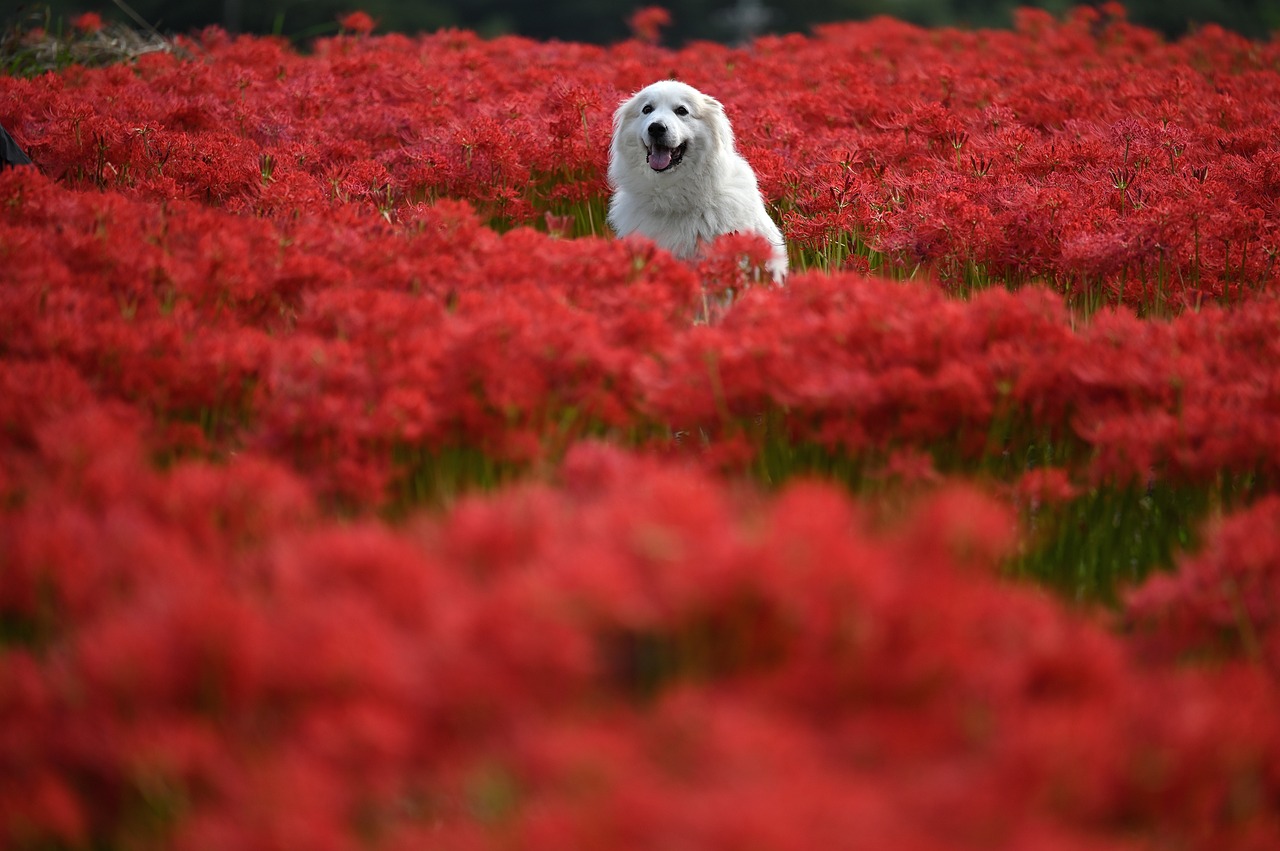
Understanding Positive Reinforcement
Positive reinforcement is more than just a training technique; it's a philosophy that embraces the idea of rewarding good behavior to encourage its repetition. Think of it like teaching a child to ride a bike. When they successfully pedal without falling, you cheer them on and maybe even give them a treat. This approach builds their confidence and makes them want to keep trying. In dog training, the core principle is the same: by rewarding your furry friend for good behavior, you create a positive association that motivates them to repeat those actions.
At its heart, positive reinforcement taps into the psychology of learning. It draws from the concept of operant conditioning, which was famously studied by B.F. Skinner. Skinner discovered that behaviors followed by rewards are more likely to be repeated. This is where the magic happens! Unlike traditional methods that often rely on punishment, positive reinforcement focuses on the *why* behind the behavior. Instead of simply stopping unwanted actions, it encourages desired behaviors by offering something the dog values, whether it be a tasty treat, a favorite toy, or even a simple pat on the head.
One of the most significant contrasts between positive reinforcement and traditional training methods is the emotional response it elicits from dogs. Traditional methods can often lead to fear or anxiety, as dogs may associate training with punishment. In contrast, positive reinforcement creates a joyful environment where dogs feel safe and eager to learn. They come to associate training sessions with fun and rewards, making them more likely to engage and participate actively. This not only enhances the learning experience but also strengthens the bond between you and your canine companion.
To truly grasp the power of positive reinforcement, consider the following elements that make it so effective:
- Immediate Rewards: Dogs learn best when they receive rewards promptly after displaying the desired behavior. This immediate feedback helps them understand exactly what they did right.
- Variety of Rewards: Different dogs respond to different rewards. While some may go wild for treats, others might prefer playtime with a favorite toy or verbal praise. Finding the right reward for your dog is crucial.
- Consistency: Consistent reinforcement helps dogs learn faster. If you reward a behavior sometimes but not others, it can confuse them.
In essence, understanding positive reinforcement is about recognizing its potential to transform not just your dog's behavior, but also your relationship with them. By fostering a training environment that is built on trust and encouragement, you're not just teaching commands; you're nurturing a lifelong partnership filled with love and respect.
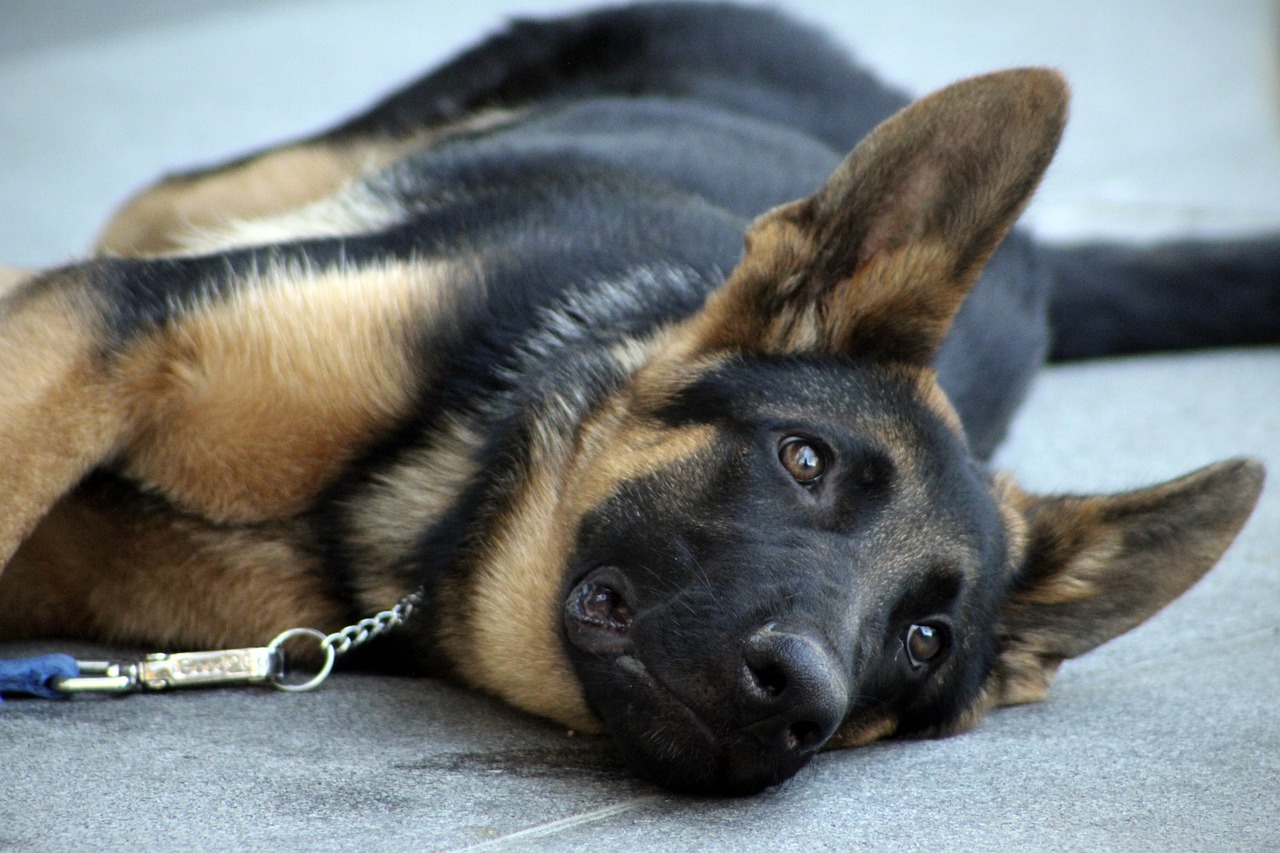
Benefits of Positive Reinforcement
When it comes to training our furry friends, the benefits of positive reinforcement are nothing short of remarkable. This method not only enhances the learning experience for dogs but also strengthens the bond between pets and their owners. Imagine a world where your dog eagerly awaits training sessions, tail wagging with excitement, rather than cowering in fear. That’s the magic of positive reinforcement! By focusing on rewarding desirable behaviors, we create an atmosphere filled with encouragement and joy, making the training process a delightful adventure.
One of the most significant advantages of positive reinforcement is the improvement in your dog's overall behavior. When dogs associate good behavior with tasty treats, praise, or playtime, they are more likely to repeat those actions. This leads to a more obedient and well-mannered companion. For example, if your dog sits on command and receives a yummy treat, they learn that sitting is a behavior that earns them rewards. Over time, this positive association helps to solidify the behavior in their memory.
Moreover, positive reinforcement enhances motivation during training sessions. Dogs, much like humans, thrive on recognition and rewards. When they know that good behavior will lead to something they love, they become more engaged and eager to learn. This motivation can be seen in various training scenarios, from basic commands to advanced tricks, creating a fun and interactive learning environment for both you and your dog.
Another noteworthy benefit is the trust and confidence that positive reinforcement fosters. Dogs trained using this method often feel more secure and willing to explore new commands or tricks. They learn that their owner is a source of positivity and rewards, which encourages them to take risks and try new things without the fear of punishment. This trust is crucial in building a lasting relationship with your canine companion, as it allows them to feel safe and valued.
As previously mentioned, positive reinforcement plays a vital role in building trust and confidence in dogs. When they receive consistent rewards for their good behavior, it creates a safe learning environment. This environment encourages dogs to engage more fully in training sessions, as they are less likely to experience anxiety or fear. Imagine your dog confidently approaching a new trick, knowing that their efforts will be met with praise or a tasty treat. This not only helps them learn faster but also enhances their overall well-being.
Using positive reinforcement can significantly reduce anxiety during training sessions. Dogs that are subjected to harsh training methods often develop stress and fear, which can hinder their ability to learn. In contrast, a reward-based approach alleviates stress and promotes a more relaxed atmosphere. When dogs know that good behavior will be rewarded, they can focus on learning rather than worrying about potential punishment. This positive shift not only makes training enjoyable but also leads to better retention of learned behaviors.
Studies have shown that dogs trained with positive reinforcement tend to retain learned behaviors longer than those trained through aversive methods. This is because the brain forms stronger connections when positive emotions are involved. When a dog successfully performs a command and is rewarded, the experience is not just a fleeting moment; it becomes a cherished memory. Over time, this leads to a more consistent display of good behavior, making training sessions increasingly effective.
In conclusion, the benefits of positive reinforcement in dog training are vast and impactful. From building trust and confidence to enhancing learning retention, this humane approach creates a more enjoyable experience for both dogs and their owners. By choosing to train with positivity, you’re not just teaching your dog commands; you’re fostering a loving relationship that will last a lifetime.
- What is positive reinforcement? Positive reinforcement is a training method that involves rewarding desired behaviors to encourage their repetition.
- How does positive reinforcement build trust? By consistently rewarding good behavior, dogs learn that their owner is a source of positivity, which fosters trust and confidence.
- Can positive reinforcement reduce anxiety in dogs? Yes, using positive reinforcement creates a relaxed training environment, helping to alleviate stress and anxiety in dogs.
- Why is timing important in positive reinforcement? Proper timing ensures that rewards are given immediately after the desired behavior, reinforcing the connection between the action and the reward.
Building Trust and Confidence
When it comes to dog training, one of the most crucial elements is between you and your furry friend. Think of it like a delicate dance; if one partner steps on the other's toes, the rhythm is lost. In the world of positive reinforcement, every reward you give is a step toward creating a harmonious relationship with your dog. By rewarding desired behaviors, you not only encourage them to repeat those actions but also show them that you are a source of good things—treats, praise, and love.
Imagine a scenario where your dog sits on command and you immediately reward them with a tasty treat and enthusiastic praise. This moment is not just about the treat; it's about the trust you are building. Your dog learns that following your commands leads to positive outcomes, reinforcing their belief that they can rely on you. This trust is foundational; it allows your dog to feel safe and secure, which is essential for effective learning.
Moreover, confidence in dogs can often be a reflection of their training experiences. When they consistently receive rewards for good behavior, they begin to understand that they can navigate the world successfully. This is particularly important for shy or anxious dogs, who may be unsure of themselves. By creating a positive training environment, you help them feel more comfortable exploring new situations and behaviors. In essence, you're not just training your dog; you're empowering them.
To illustrate the relationship between trust, confidence, and positive reinforcement, consider the following table:
| Aspect | Positive Reinforcement Impact |
|---|---|
| Trust | Builds a reliable bond through consistent rewards |
| Confidence | Encourages exploration and risk-taking in a safe environment |
| Learning | Enhances retention of commands and behaviors |
In summary, the journey of building trust and confidence in your dog through positive reinforcement is a rewarding experience for both of you. It's not just about teaching commands; it's about fostering a relationship where your dog feels safe, valued, and eager to learn. As you embark on this training adventure, remember that every small success is a step toward a stronger bond. So, the next time your pup performs a trick, think of it as a testament to the trust you’ve built together. What could be more fulfilling than that?
- What is positive reinforcement? Positive reinforcement is a training technique that involves rewarding desired behaviors to encourage their repetition.
- How does positive reinforcement build trust? By consistently rewarding good behavior, dogs learn to associate their owner with positive experiences, fostering a trusting relationship.
- Can positive reinforcement help anxious dogs? Yes, it can significantly reduce anxiety by creating a safe and supportive training environment.
- What types of rewards can I use? Rewards can include treats, toys, or verbal praise, depending on what motivates your dog the most.
- How important is timing in positive reinforcement? Timing is crucial; immediate rewards help dogs connect their actions with the positive outcome.
Reducing Anxiety in Training
Training your dog should be a fun and rewarding experience, but for some dogs, the thought of training can induce anxiety. This is where the magic of positive reinforcement comes into play. By using this method, you can create a training environment that feels safe and engaging, rather than one that triggers fear or stress. Imagine walking into a classroom where every student is eager to learn because they know they'll be rewarded for their efforts—this is the atmosphere positive reinforcement aims to cultivate.
When dogs receive rewards for their good behavior, they associate training sessions with positive experiences. This association significantly reduces their anxiety levels. Instead of fearing reprimands or negative feedback, your furry friend will look forward to training time, eagerly anticipating the treats or praise that follow their successful actions. For instance, if your dog sits on command and is immediately rewarded with a tasty treat, they begin to view the act of sitting not as a chore, but as a pathway to something enjoyable.
Additionally, creating a calm environment during training is crucial. Start in a quiet space where your dog feels comfortable. As you gradually introduce new commands or tricks, maintain a relaxed demeanor. Dogs are incredibly perceptive; they can pick up on your emotions. If you approach training with excitement and patience, your dog will mirror that energy, making learning a more enjoyable experience for both of you.
It's also essential to recognize the signs of anxiety in your dog. Common indicators include:
- Excessive panting
- Tucking the tail
- Whining or barking
- Avoidance behavior
Incorporating play into your training can also be an effective way to ease anxiety. Dogs love to play, and integrating games into your training sessions can make learning feel less like work and more like fun. For example, after a successful training session, engage your dog in a game of fetch or tug-of-war. This not only reinforces their good behavior but also helps them associate training with joy and excitement.
Ultimately, the key to reducing anxiety during training lies in creating a positive, supportive atmosphere. By employing positive reinforcement techniques, recognizing signs of stress, and incorporating fun into your sessions, you can help your dog thrive in their learning journey. Remember, training is a partnership between you and your dog, and fostering a trusting relationship will lead to lasting success.
- What is positive reinforcement? Positive reinforcement is a training method that rewards desired behaviors to encourage their repetition.
- How can I tell if my dog is anxious during training? Look for signs such as excessive panting, tail tucking, or avoidance behavior. Adjust your training approach if you notice these signs.
- Can playtime help reduce my dog's anxiety? Yes! Incorporating play into training sessions can make learning fun and less stressful for your dog.
- What types of rewards are best for positive reinforcement? Treats, toys, and verbal praise are all effective rewards. Choose what your dog responds to best.
Enhancing Learning Retention
When it comes to dog training, one of the most significant advantages of using positive reinforcement is its remarkable ability to enhance learning retention. Imagine trying to teach your dog a new trick, like rolling over. If you only show them how to do it once and then expect them to remember it forever, you're in for a surprise! Dogs, much like humans, need consistent reinforcement to solidify their learning. This is where the magic of positive reinforcement comes into play.
Studies have shown that dogs trained with reward-based methods are not only more likely to remember commands but also tend to perform them with greater consistency over time. A key factor in this process is the concept of immediate reinforcement. When you reward your dog right after they exhibit the desired behavior, you're creating a strong association in their mind. For instance, if your dog sits on command and you immediately give them a treat, they start to understand that sitting leads to yummy rewards. This connection is crucial for long-term retention.
Moreover, the type of reward you use can also impact how well your dog retains what they've learned. Here’s a quick breakdown of effective rewards:
| Type of Reward | Effectiveness |
|---|---|
| Treats | High - Particularly effective for new commands |
| Toys | Moderate - Great for play-related commands |
| Verbal Praise | High - Reinforces emotional connection |
In addition to the type of reward, the frequency of reinforcement is essential. Initially, you might want to reward your dog every time they perform the desired behavior. As they become more proficient, you can gradually shift to a variable reinforcement schedule, where rewards are given intermittently. This method not only keeps your dog engaged but also enhances their retention because they never know when the next reward will come. It's like playing a game of chance for them!
Furthermore, the emotional state of your dog during training can significantly influence their learning retention. A relaxed and happy dog is much more likely to absorb information than one that is stressed or anxious. Creating a positive training environment, free from distractions and negative stimuli, will help your dog focus better and improve their memory retention. Think of it as setting the stage for a great performance; the better the environment, the better the show!
In summary, enhancing learning retention in your dog through positive reinforcement involves a combination of immediate rewards, appropriate types of reinforcement, and a supportive training environment. By focusing on these elements, you can help your canine companion learn more effectively and enjoyably, leading to a more fulfilling training experience for both of you.
- What is positive reinforcement? Positive reinforcement is a training method that involves rewarding desired behaviors to encourage their repetition.
- How does positive reinforcement enhance learning retention? It creates strong associations between behaviors and rewards, making it easier for dogs to remember commands.
- What types of rewards are most effective? Treats, toys, and verbal praise are all effective rewards, with treats often being the most impactful for learning new commands.
- How often should I reward my dog during training? Initially, reward every time your dog performs the desired behavior, then gradually shift to a variable schedule.
- Can anxiety affect my dog's learning? Yes, a stressed dog is less likely to absorb information, so a positive and calm training environment is crucial.
Common Techniques in Positive Reinforcement
When it comes to dog training, positive reinforcement is more than just a buzzword; it’s a game changer! Imagine teaching your furry friend to sit, stay, or even roll over, all while showering them with love and rewards. That's the essence of positive reinforcement! This method revolves around the idea of rewarding your dog for good behavior, making it more likely they'll repeat that behavior in the future. But how do you effectively implement this approach? Let’s dive into some common techniques that can make your training sessions both enjoyable and productive.
One of the most popular techniques is clicker training. This method uses a small handheld device that makes a distinct clicking sound when your dog performs the desired behavior. The click serves as an immediate marker, signaling to your dog that they’ve done something right. Following the click, a reward—usually a treat—is given. This creates a clear connection between the behavior and the reward. The beauty of clicker training lies in its precision; you can click at the exact moment your dog performs the action, which helps them understand what you’re asking for.
Another widely used technique involves treat rewards. Treats can be an incredibly effective motivator for dogs. However, it’s important to choose high-value treats that your dog absolutely loves. This could be anything from small pieces of chicken to their favorite commercial dog treats. The key is to ensure that the treats are small enough to be consumed quickly so that training can continue without long breaks. Over time, as your dog learns the commands, you can gradually reduce the frequency of treats, transitioning to praise or toys as rewards.
Speaking of praise, verbal encouragement is another powerful tool in your training arsenal. Dogs thrive on positive feedback, and a simple “Good boy!” or “Well done!” can boost their confidence and motivate them to repeat the behavior. Combine verbal praise with physical affection, like petting or belly rubs, to reinforce the positive behavior even further. It’s like giving your dog a high-five for a job well done!
To give you a clearer picture of how these techniques work together, here’s a simple table summarizing the techniques:
| Technique | Description | Best Use |
|---|---|---|
| Clicker Training | Uses a clicker to mark desired behaviors | Precise training for specific commands |
| Treat Rewards | Gives treats for good behavior | Motivating during initial learning |
| Verbal Praise | Uses encouraging words to reinforce behavior | Enhances bond and builds confidence |
Additionally, you might find it helpful to incorporate playtime as a reward. Dogs are naturally playful, and using their favorite toy as a reward can be incredibly effective. For example, if your dog successfully completes a command, toss their favorite ball or engage them in a quick game of tug-of-war. This not only reinforces the behavior but also makes training feel like a fun activity rather than a chore.
In conclusion, the beauty of positive reinforcement lies in its versatility. Whether you choose clicker training, treat rewards, verbal praise, or playtime, the key is to remain consistent and patient. Remember, every dog is unique, so it might take some experimentation to find the techniques that work best for your furry companion. Happy training!
- What is positive reinforcement? Positive reinforcement is a training method that involves rewarding desired behaviors to encourage their repetition.
- Can I use any treats for training? It’s best to use high-value treats that your dog loves, as this will motivate them to learn more effectively.
- How soon should I reward my dog after they perform a command? Timing is crucial; rewards should be given immediately after the desired behavior to create a clear association.
- What if my dog isn’t motivated by treats? Consider using toys, verbal praise, or playtime as alternatives to treats.
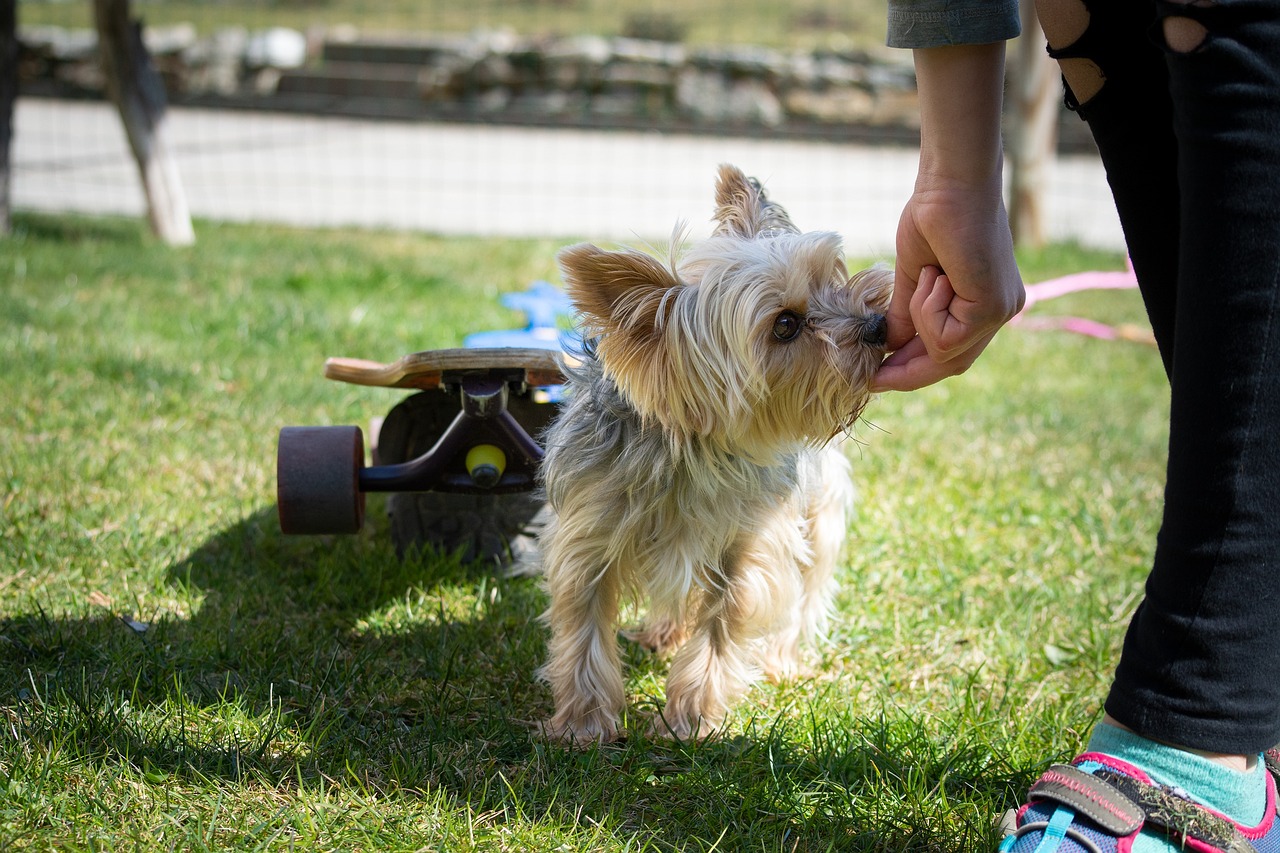
Choosing the Right Rewards
When it comes to positive reinforcement in dog training, choosing the right rewards is absolutely crucial. Think of it like picking the perfect bait for fishing; if you want to catch a big one, you need to know what they like! Just as different fish are attracted to different types of bait, dogs have their own unique preferences when it comes to rewards. This means that what works for one dog might not work for another. So, how do you determine the best rewards for your furry friend? Let’s dive into the various options available and how to select the ones that will motivate your dog the most.
First off, rewards can be categorized into three main types: treats, toys, and verbal praise. Treats are often the most effective, especially for food-driven dogs. However, it’s important to choose treats that are not only appealing but also healthy. You wouldn’t want to reward your dog with something that could lead to health issues down the line. Look for high-value treats, such as small pieces of chicken, cheese, or specially formulated dog treats that your dog absolutely loves. Keep in mind that the size of the treat should be small enough to avoid overfeeding during training sessions.
Toys can also serve as excellent rewards, especially for dogs that are more play-driven than food-driven. A quick game of tug-of-war or a fun fetch session can be an enticing reward for your pup. Just like with treats, it’s essential to choose toys that your dog enjoys. Some dogs prefer squeaky toys, while others may be more interested in balls or ropes. Experimenting with different types can help you discover what gets your dog most excited!
Verbal praise is another powerful tool in your rewards arsenal. Dogs thrive on love and attention, so a simple “Good boy!” or “Well done!” can go a long way in reinforcing positive behavior. The key here is to use a cheerful and enthusiastic tone to convey your excitement. Pairing verbal praise with physical affection, like petting or belly rubs, can further enhance the reward experience for your dog.
Now, let’s break down some factors to consider when choosing rewards:
- Dog's Preferences: Observe what excites your dog the most. Is it food, toys, or praise? This will guide your choices.
- Training Context: Different situations may require different rewards. For instance, during high-distraction training sessions, high-value treats might be necessary.
- Health Considerations: Always consider your dog's dietary restrictions and overall health when selecting treats.
In summary, the right rewards can make all the difference in your dog training journey. By understanding your dog's preferences and the context of training, you can effectively motivate and reinforce desired behaviors. Remember, the goal is to create a positive and enjoyable experience for both you and your dog, paving the way for a strong bond built on trust and understanding.
Q1: How can I tell if my dog likes a particular reward?
A1: Pay attention to your dog's body language. If they seem excited, eager, or focused when you present a reward, it's likely a good choice!
Q2: Can I use regular dog food as a reward?
A2: Yes, you can use regular dog food, but it might not be as motivating as high-value treats. Consider mixing it up with special treats for training.
Q3: How often should I reward my dog during training?
A3: Initially, reward your dog every time they perform the desired behavior. As they learn, you can gradually reduce the frequency to intermittent rewards.
Timing and Consistency
When it comes to dog training, are your best friends. Imagine trying to teach a child to ride a bike. If you praise them only after they’ve fallen, they might not understand what they did right or wrong. Similarly, dogs thrive on immediate feedback. This means that the moment they exhibit the desired behavior, you should reward them right away. This immediate reinforcement helps your dog connect the dots between their action and the reward, making it clear what behavior you want them to repeat.
Consistency in training is equally crucial. Dogs, much like humans, can get confused if the rules change from one day to the next. If you allow your dog to jump on you one day and scold them for it the next, they won’t understand what’s expected of them. To avoid this confusion, establish clear rules and adhere to them consistently. This creates a stable environment where your dog knows exactly what behaviors are acceptable and which ones are not.
To further illustrate the importance of timing and consistency, consider the following table that outlines the effects of immediate versus delayed reinforcement:
| Type of Reinforcement | Effect on Learning |
|---|---|
| Immediate Reinforcement | Strengthens the association between behavior and reward, leading to faster learning. |
| Delayed Reinforcement | Can confuse the dog, making it harder for them to understand which behavior is being rewarded. |
Additionally, maintaining a consistent training routine is vital. Dogs thrive on routine, and establishing a regular schedule for training sessions can help reinforce the behaviors you want to encourage. Aim for short, frequent training sessions rather than long, overwhelming ones. This keeps your dog engaged and prevents them from losing interest.
In conclusion, mastering the art of timing and consistency in positive reinforcement not only enhances your dog’s learning experience but also strengthens the bond between you and your furry friend. Remember, every moment counts, so be ready with your rewards and stay consistent in your approach!
- How soon should I reward my dog after they perform a desired behavior? Ideally, you should reward them within seconds of the behavior to reinforce the connection.
- What if my dog doesn't respond to rewards? Experiment with different types of rewards, like treats, toys, or praise, to find what motivates your dog best.
- Can I train my dog too often? While consistency is key, avoid overwhelming your dog with too many sessions in a row. Keep sessions short and enjoyable.
Avoiding Common Mistakes
Even the most experienced trainers can stumble when it comes to positive reinforcement. It's easy to think that simply offering a treat will lead to immediate results, but the reality is a bit more nuanced. One of the most common mistakes is over-rewarding. Sure, your dog might love those tasty treats, but if you give them out too freely, they can lose their value. Imagine if you received a gold star for every little thing you did—eventually, those stars would mean nothing!
Another pitfall is inconsistent reinforcement. If you reward your dog for sitting one day but ignore them the next, it creates confusion. Dogs thrive on predictability, so sticking to a routine is essential. Think of it like a game: if the rules change every time you play, how can anyone win? Consistency helps your dog understand what behaviors are desirable and which ones aren’t.
Timing is also crucial in positive reinforcement. Delivering a reward right after your dog performs the desired behavior is key to making the connection clear. If you wait too long, your pup might not associate the treat with their action. It’s like giving someone a compliment days after they’ve done something great; they may not even remember what you’re talking about! Immediate rewards help solidify the behavior in their mind.
Additionally, be wary of using punishment alongside positive reinforcement. While it might seem like a good idea to correct unwanted behaviors at the same time, it can lead to confusion and anxiety. Instead, focus on redirecting your dog to a positive behavior and rewarding that instead. This approach not only encourages good habits but also builds a more trusting relationship between you and your furry friend.
Lastly, remember to observe your dog’s reactions. Every dog is unique, and what works for one might not work for another. Pay close attention to how your dog responds to different rewards and training techniques. Are they excited about treats, or do they prefer toys? Tailoring your approach will lead to better results. Think of it as customizing a playlist—what gets your dog moving might be different from what gets another dog wagging their tail!
In summary, avoiding these common mistakes in positive reinforcement training can significantly enhance the experience for both you and your dog. By being mindful of over-rewarding, maintaining consistency, timing your rewards correctly, avoiding punishment, and observing your dog's preferences, you’ll create a more effective and enjoyable training environment.
- What is positive reinforcement? Positive reinforcement is a training method that involves rewarding desired behaviors to encourage their repetition.
- How do I know what rewards to use? Pay attention to what excites your dog—treats, toys, or even verbal praise can be effective rewards.
- Can I use positive reinforcement for all dog behaviors? Yes, positive reinforcement can be applied to teach a variety of behaviors, from basic commands to more complex tricks.
- What should I do if my dog isn't responding to rewards? Consider switching up the rewards or evaluating your training techniques. Every dog is different, and what works for one may not work for another.
Frequently Asked Questions
- What is positive reinforcement in dog training?
Positive reinforcement is a training method that involves rewarding your dog for desired behaviors. This could be through treats, praise, or playtime. The idea is to encourage your dog to repeat those behaviors by associating them with something positive.
- How does positive reinforcement differ from traditional training methods?
Unlike traditional methods that often use punishment or negative reinforcement, positive reinforcement focuses on rewarding good behavior. This approach builds a more trusting relationship between you and your dog, making training a more enjoyable experience for both parties.
- What are the benefits of using positive reinforcement?
There are numerous benefits to using positive reinforcement, including improved behavior, a stronger bond with your dog, and a more enjoyable training environment. Dogs trained this way tend to be more motivated and engaged, leading to better learning outcomes.
- How do I choose the right rewards for my dog?
Choosing the right rewards depends on what your dog finds motivating. Common rewards include treats, toys, and verbal praise. Experiment with different options to see what excites your dog the most, and use those as rewards during training.
- Why is timing important in positive reinforcement?
Timing is crucial because you want to reinforce the desired behavior immediately after it occurs. This helps your dog make the connection between the action and the reward, ensuring effective learning.
- What are some common mistakes to avoid in positive reinforcement training?
Some common mistakes include over-rewarding your dog, which can lead to confusion, and inconsistent reinforcement, which can undermine your training efforts. It’s important to maintain a consistent routine and reward only the behaviors you want to encourage.
- Can positive reinforcement help with my dog's anxiety?
Yes! Positive reinforcement can significantly reduce anxiety during training sessions. By creating a safe and rewarding environment, your dog will feel more relaxed and willing to engage in learning without fear of punishment.
- How does positive reinforcement enhance learning retention?
Dogs trained with positive reinforcement tend to retain learned behaviors longer. Studies show that reward-based training methods enhance memory, making it easier for dogs to recall and perform the desired behaviors consistently.


